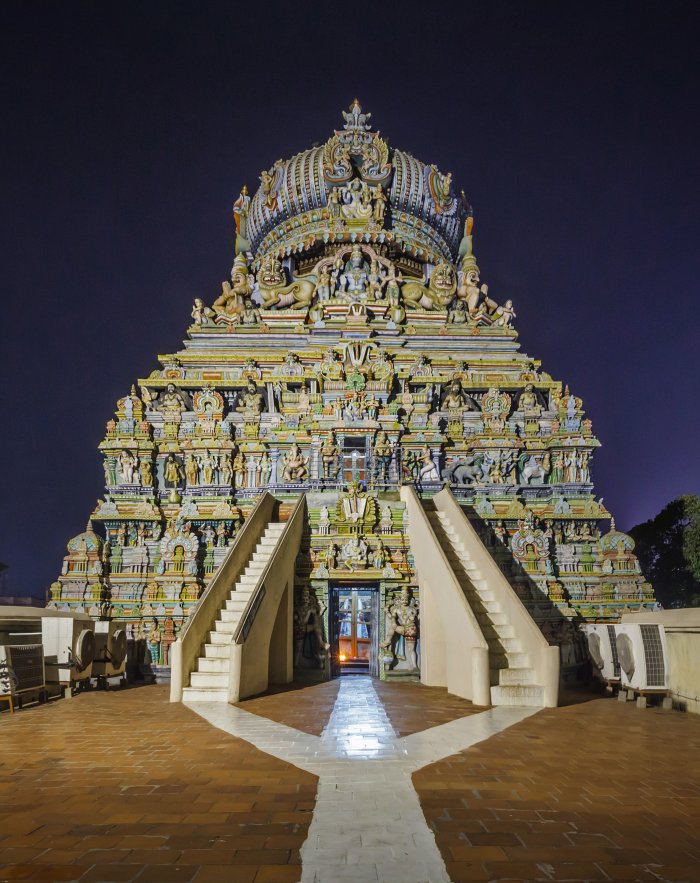Vishnu: Supreme, Universal Hindu God Whose Avatars Reach Nations, Cultures And Races
A. Sutherland - AncientPages.com -In Hindu beliefs, the three gods Brahma, Shiva, and Vishnu, are worshiped as the Great Trinity (Trimurti). They are all generally equal in their power and influence. They represent three aspects: creation, preservation, and destruction.
Vishnu seated on Ananta, facing West (direction of the waters). Second porch. Shrine excavated. Cave 3, Badami, Karnataka. End of the 6th century. Image credit: Ismoon - CC BY-SA 4.0
Observing the Hindu Trimurti, we see Brahma, the creator, looking to the left; Vishnu, the preserver, looks straight ahead, while Shiva, the destroyer, looks to the right.
Vishnu Chief God In Hinduism
The Hindu trinity symbolizes perfection, where Brahma is associated with strength and power; Shiva wins the war thanks to his brutality and impetuous, ruthless character, and Vishnu is a loving God with a special place in the hearts of his believers.
The Hindu god Vishnu is the pervader ("one who is everything and inside everything"), protector, and preserver as he is connected to sacred nature. The mountains are his bones, the clouds hair on his head, the air his breath, the rivers his blood vessels, and the trees are the hairs of his body. We must not forget his eyes represent the sun and the moon, respectively, where the movements of the eyelids symbolize the transition between day and night.
Vishnu is usually depicted with light blue skin and four arms. He is the beautiful guardian of life, light, fire, and water. In four hands, he holds his attributes: a lotus (the symbol of purity and creativity), a club, which symbolizes time. A wheel is a symbol of the cycle of existence, and a conch (shankha), represents a source of all things.
 Kalki Avatar (Image courtesy of Late Sri G. K. Haldipurkar and Aniruddha Haldipurkar, Karwar.) Image credit: Raja Ravi Varma - Public Domain
Kalki Avatar (Image courtesy of Late Sri G. K. Haldipurkar and Aniruddha Haldipurkar, Karwar.) Image credit: Raja Ravi Varma - Public Domain
Vishnu usually wears a pitambara, a unique garment of gold that symbolizes the Vedas; it is said that the divine light of Vishnu shines through his beautiful garment in the same way as the light of truth radiates through the holy words.
He rides on the eagle Garuda, a heavenly bird with four arms and multi-colored wings, and usually rests, floating on Ananta, on the snake Ananta ("Endless" or "infinity") on the primeval waters. Lord Vishnu is often accompanied by his consort, Lakshmi, the Hindu goddess of fortune and the manifestation of Vishnu's energy.
On the forehead, Vishnu has a mark that looks like a U. There are millions of people who worship Vishnu. Those who do so often have the same brand on their foreheads. The mark is drawn there with ash or color.
As the supreme god, he appears in one of his incarnations when his presence is needed.
Ten Incarnations Of Vishnu
Traditionally, Vishnu appears in ten different divine figures (avatars). He takes many various forms to restore cosmic order and eradicate evil. Nine avatars have already come, and the tenth will announce the world's end.
Koodal Azhagar Temple in Tamil Nadu dedicated to Lord Vishnu. Credit: Adobe Stock - Konstantin
His first avatar was the great horned fish Matsya who saved Manu, the first human, from the Great Flood. In his second avatar, he is Kurma (a tortoise) who helps the gods and demons to support the churning of the ocean and recover Amrita, the potion of immortality.
Then, in the third one, Vishnu acts like a wild boar Varaha to kill the demon Hiranyaksha ("Golden Eye"). As legend has it, Varaha is extremely dangerous with a cry louder than god Indra's thunder, and its eyes are brighter than lightning. Shining like the sun, Varaha swims deep down to the seabed to kill Hiranyaksha, and thus he rescues the Earth that once more can float on the surface.
As Narasimha (half-lion half-man) in the fourth incarnation, Vishnu has to destroy Hiranyakasipa, another demon and brother of Hiranyaksha, who also put the planet in danger. Hiranyakasipa knew he was immortal, and no god, animal, or human could kill him. In the fifth reincarnation, Vishnu is Vamana, the dwarf that must act quickly.
His enemy is king Bali, who has already overpowered the three worlds and banished the gods from heaven. Bali offers Vamana as much land as he could cross in three paces. Vamana changes his size and becomes the giant, Trivikrama, so gigantic that he takes Bali's entire kingdom and pushes it down into the underworld.
Vishnu also came as Parashurama (Ram with an ax), then Rama, the hero of the Hindu epic, the Ramayana, and as Krishna, known from the epic, the Mahabharata and other texts. At the same time, the second last Vishnu avatar is Buddha. His tenth incarnation is yet to come, and Vishnu will appear at the end of time in human form, riding on a white horse (in South India, Kalki is depicted as a horse). According to some, the world will be destroyed before a new creation. Others say this idea is based on the Maitreya Buddha doctrine.
In the Mahabharata, Kalki restores the moral order of people on Earth; he judges men and women, punishes evil, and rewards the good.
However, they will still appear on Earth in successive periods, as they are associated with different stages of human evolution on our planet.
Updated on August 4, 2022
Written by – A. Sutherland - AncientPages.com Senior Staff Writer
Copyright © AncientPages.com All rights reserved. This material may not be published, broadcast, rewritten or redistributed in whole or part without the express written permission of AncientPages.com
Expand for referencesReferences:
Jansen E.R. Book of Hindu Imagery
Swami Harshananda, Hindu Gods and Goddesses
More From Ancient Pages
-
 Does This Cathedral Offer Evidence Our Calendar Is ‘Missing’ 297 Years?
Featured Stories | May 6, 2022
Does This Cathedral Offer Evidence Our Calendar Is ‘Missing’ 297 Years?
Featured Stories | May 6, 2022 -
 1.2-Million-Year-Old Obsidian Axe Made By Unknown Human Species Discovered In Ethiopia
Archaeology | Jan 25, 2023
1.2-Million-Year-Old Obsidian Axe Made By Unknown Human Species Discovered In Ethiopia
Archaeology | Jan 25, 2023 -
 The Maya Produced Rubber 3,000 Years Before Goodyear
Ancient History Facts | Mar 12, 2016
The Maya Produced Rubber 3,000 Years Before Goodyear
Ancient History Facts | Mar 12, 2016 -
 Ancient Artifacts With Puzzling Signs Found In North America May Be Evidence Of A Lost Civilization Or Unknown Native American Tribe
Featured Stories | Feb 4, 2025
Ancient Artifacts With Puzzling Signs Found In North America May Be Evidence Of A Lost Civilization Or Unknown Native American Tribe
Featured Stories | Feb 4, 2025 -
 Skofnung – Formidable Sword With Supernatural Powers That Belonged To Legendary Danish King Hrólf Kraki
Featured Stories | Mar 3, 2018
Skofnung – Formidable Sword With Supernatural Powers That Belonged To Legendary Danish King Hrólf Kraki
Featured Stories | Mar 3, 2018 -
 All 5 Genetic ‘Letters’ Of DNA May Have Been Brought By Meteorites To Ancient Earth
DNA | May 21, 2022
All 5 Genetic ‘Letters’ Of DNA May Have Been Brought By Meteorites To Ancient Earth
DNA | May 21, 2022 -
 Is ‘Someone’ Regularly Altering The Course Of History? – Is So How, Why And Who? Part 1
Ancient Mysteries | Nov 30, 2020
Is ‘Someone’ Regularly Altering The Course Of History? – Is So How, Why And Who? Part 1
Ancient Mysteries | Nov 30, 2020 -
 Leonardo da Vinci’s 280-Meter Long Bridge Design – Tested
Archaeology | Oct 17, 2019
Leonardo da Vinci’s 280-Meter Long Bridge Design – Tested
Archaeology | Oct 17, 2019 -
 Probably The Oldest Star Map Discovered In Stone Chamber Of The Kitora Tomb, Asuka Nara, Japan
Ancient History Facts | Jul 19, 2015
Probably The Oldest Star Map Discovered In Stone Chamber Of The Kitora Tomb, Asuka Nara, Japan
Ancient History Facts | Jul 19, 2015 -
 On This Day In History: Thomas Cromwell Arrested In Westminster – On June 10, 1540
News | Jun 10, 2016
On This Day In History: Thomas Cromwell Arrested In Westminster – On June 10, 1540
News | Jun 10, 2016 -
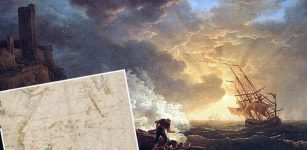 Has The Mystery Of The Lost Trading Ship Zuytdorp Been Solved?
Archaeology | Dec 11, 2024
Has The Mystery Of The Lost Trading Ship Zuytdorp Been Solved?
Archaeology | Dec 11, 2024 -
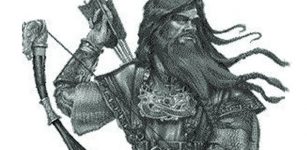 Vali – Son Of Odin, Who Avenged Death Of Balder And Survived Ragnarok
Featured Stories | Aug 29, 2019
Vali – Son Of Odin, Who Avenged Death Of Balder And Survived Ragnarok
Featured Stories | Aug 29, 2019 -
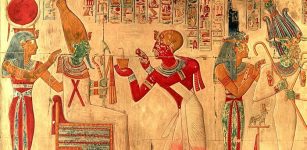 Osiris: Enigmatic And Powerful God In Ancient Egypt
Egyptian Mythology | Jun 13, 2017
Osiris: Enigmatic And Powerful God In Ancient Egypt
Egyptian Mythology | Jun 13, 2017 -
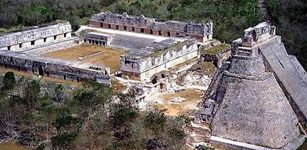 Ancient City Of Uxmal And Magnificent Pyramid Of The Magician
Featured Stories | Dec 19, 2015
Ancient City Of Uxmal And Magnificent Pyramid Of The Magician
Featured Stories | Dec 19, 2015 -
 1,000-Year-Old Palace Kitchen With A Cannonball Inside An Oven Found At Harput Castle In Elazig, Turkey
Archaeology | Aug 28, 2023
1,000-Year-Old Palace Kitchen With A Cannonball Inside An Oven Found At Harput Castle In Elazig, Turkey
Archaeology | Aug 28, 2023 -
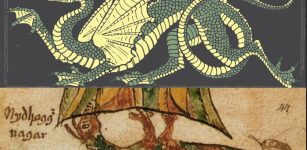 Nidhogg – Dreadful Winged Corpse-Eating Dragon Who Is Enemy Of Asgard And Yggdrasil Tree
Featured Stories | May 9, 2020
Nidhogg – Dreadful Winged Corpse-Eating Dragon Who Is Enemy Of Asgard And Yggdrasil Tree
Featured Stories | May 9, 2020 -
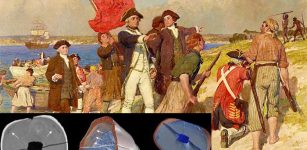 Unique Study Of Skeletal Remains Reveals Grave Health Of Australian Pioneer Settlers
Archaeology | Apr 7, 2022
Unique Study Of Skeletal Remains Reveals Grave Health Of Australian Pioneer Settlers
Archaeology | Apr 7, 2022 -
 Gold Coins Shed Light On The Mystery Of Sandby Borg And Massacre On The Swedish Island
Archaeology | Oct 16, 2017
Gold Coins Shed Light On The Mystery Of Sandby Borg And Massacre On The Swedish Island
Archaeology | Oct 16, 2017 -
 Psychedelic Blue Lotus Of Egypt – A Misunderstood Ancient Mystery?
Archaeoastronomy | Mar 19, 2025
Psychedelic Blue Lotus Of Egypt – A Misunderstood Ancient Mystery?
Archaeoastronomy | Mar 19, 2025 -
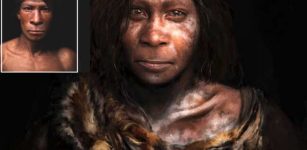 New Details On Neanderthals – Revealed By Museum Exhibition In Norway
Archaeology | Jun 16, 2023
New Details On Neanderthals – Revealed By Museum Exhibition In Norway
Archaeology | Jun 16, 2023


